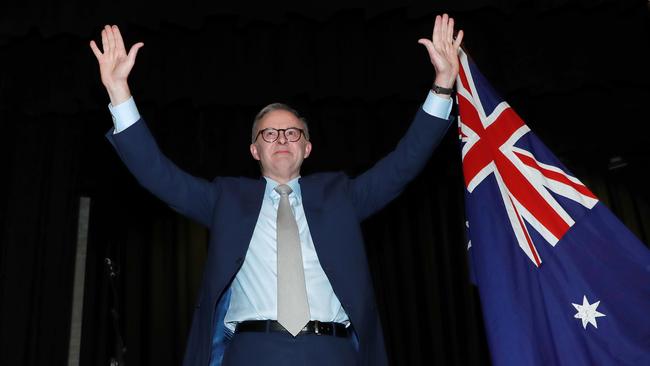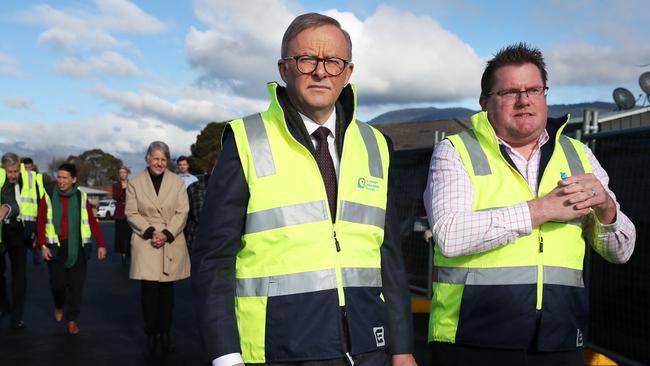
For those that had enterprise agreements set for negotiation in coming months the so called ”softening up” process began, with a clear message to the employer: “Don’t even think about proposing annual wage increases of less than five per cent – consider yourselves lucky we are not going for seven per cent or more”.
The pleas from Reserve Bank Governor Philip Lowe and Federal Treasurer Jim Chalmers for remuneration increases below 4 per cent are not on the union agenda.
The standard “softening up” procedures embrace co-ordinated sick days, absenteeism, and the odd ban or two. And given that the work force is finding cost of living pressures impacting their standard of living, they are right behind the union cause.
In addition, the workers know that labour is in short supply and their employers don’t want to lose them. In addition both the unions and the general workforce know that middle managers also want pay rises.
In the eyes of Reserve Bank Governor Philip Lowe if these remuneration rise forces come together and convert to price rises it has the potential create a perfect inflationary storm.
Indeed, if the Reserve Bank talks with large enterprise executives they will also learn that the price rises already in the pipeline will test the Reserve Bank’s expectation (hope?) that inflation will peak at seven per cent.
Double figures are a possibility unless there is a fall in global inflation. These days wage breakouts usually start in the state government enterprises or branches of state public services, because that’s where unions have most power.
Accordingly, the first of the big arm wrestles is taking place in NSW where the state government wants a clamp on wages and the transport and other unions want to be delivered the “Albanese” five per cent wage rise or more.

The whole nation will be watching the outcome of that wrestle because it will set national precedents.
In Australia, the Reserve Bank’s armoury to fight inflation is confined to using higher interest rates to create higher unemployment which in turn moderates wage and price demands.
In addition it forces companies to invest to improve productivity by reduce labour content rather than increasing output. And because a big section of our consumer population are over borrowed on token interest rates this will create a very nasty scenario.
The plan of the new government to counteract these forces is to call a summit of big enterprises, big unions, big governments and assorted others participants. That’s what Prime Minister Bob Hawke and Treasurer Paul Keating did in 1983 with considerable success.
But Australia is now a different place, with much more of our workforce in non unionised family enterprises. When Bob Hawke became Prime Minister, the former ACTU President was still a union hero and, in Bill Kelty at the ACTU.
Hawke had an ally who knew the Summit would set the scene for national prosperity plus an ALP agenda which included superannuation.
Treasurer Paul Keating was a master of persuasion and been Treasurer in the final year of the Whitham government so had experience in the job. In the 1983 accord, Keating put on the table targeted tax cuts for low-income and middle-income workers; the introduction of award superannuation; boosts to Australian manufacture via various steel and vehicle industry plans and Increases in pensions plus income supplements for low-income families.
The government also agreed to crack down in tax avoidance and gave inflation guarantees. Kelty convinced almost all unions to limit pay claims to around 3.8 per cent in year one and 2.3 per cent in year two. To the union movement the Hawke-Keating inflation guarantees were important and they could be delivered because in those days Australia was far more self sufficient.
In the decades that followed successive governments would allow the country to become more and more dependent on China and others so making domestic inflation guarantees in 2022 almost impossible. I have no doubt that Chalmers will be talking to Paul Keating on how he and Albanese can put together the 2022 equivalent of the 1983 price and wages accord.
The most obvious measure is to try an moderate wage rises with tax cuts. But given the government deficit and the big ALP spending plans promised in the election campaign, any income tax cuts that will need to be matched with increases in taxes in other places.
Watch out big companies, family business, plus share and property owners. I am not going to speculate on options at this stage but the above groups will be the firing line if Chambers tries to moderate wage demands via tax cuts. They should be prepared.
Companies plus state governments would be well advised to at least defer making agreements with unions until the government puts its package on the table.
Given the wage rise pressure building up in the community the sooner any packages are put on the table the better. But a second alternative strategy might be require.
We might need to start planning for living with higher inflation and higher interest rates.







Hardly a week had gone by after Anthony Albanese had become Australia’s thirty first Prime Minister before many highly unionised work sites noticed a change in the industrial climate.